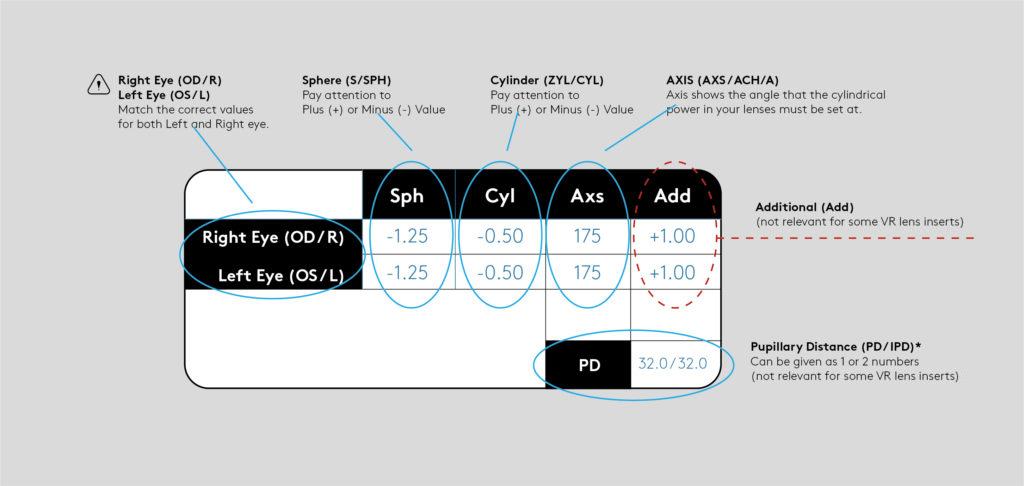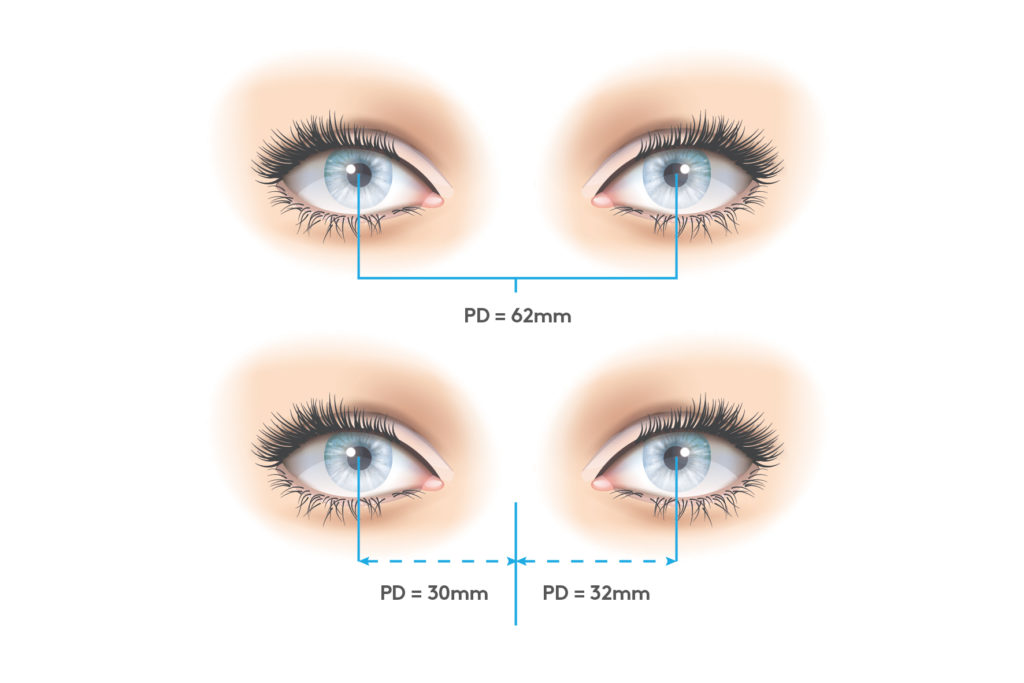Understanding your prescription.
Reading a prescription may seem like the darks arts, but our guide below will help you to navigate and understand your prescription information.
Below is an example prescription. Prescriptions can vary, and yours may not look exactly like this.

Spherical error (SPH or S)
REQUIRED
SPH stands for the spherical error and shows whether you have myopia (with a minus sign), or hypermetropia (with a plus sign). The number shows the strength of lens you need. A smaller number means the condition is milder. PL is short for plano and means there is no refractive error in that eye.
Cylinder (CYL / ZYL ) and Axis (A /ACH AXS)
REQUIRED
CYL stands for cylinder and shows the severity of any astigmatism. Axis shows the angle that the cylindrical power in your lenses must be set at to correct it. You may see DS written in the column which stands for dioptre sphere and means you have no astigmatism.
Prismatic power (prism) and base
NOT REQUIRED FOR VR INSERTS
Prism is short for prismatic power and is used to correct problems with binocular vision, where both your eyes may have some difficulty working together. The number in the prism column shows the strength of the correction, and the base column shows which direction the prism is acting in. Back vertex distance (BVD) BVD stands for back vertex distance and is the distance in millimetres between the front of your eye and the lens of your glasses. This distance can influence the effective strength of a lens and is usually only given for higher-strength prescriptions.
Near add and intermediate add
NOT REQUIRED FOR VR INSERTS
This refers to the additional correction you may need to focus at short distances and is more common over the age of 40. The intermediate add refers to the additional strength of lenses you may need to bring a ‘mid-range’ distance in focus (usually the distance to a computer screen you are viewing) and the near add is usually for close tasks such as reading. This number is added to the spherical error part of the prescription to give the actual near or intermediate prescription. Not all prescriptions will have a section for the intermediate add, instead it may be written in by hand if needed.
Pupillary Distance (PD / IPD)
NOT REQUIRED FOR VR INSERTS
Pupillary distance (PD) measures the distance between the centers of your pupils. This measurement is used to determine where you look through the lens and should be as accurate as possible, as it will help your eyes align to the centre of the lens. If you would like to find out what your PD measurement is, check out our guide to measuring your PD. The most accurate way of measuring your PD would be to contact your optician to get them to measure your PD.

*The Oculus Quest 1 and 2 have an inbuilt IPD adjustment system.
Please refer to your original user manual on how to find a comfortable setting for you.
If you need help, you can send us a message via the live chat or get in touch on support@adlens.com